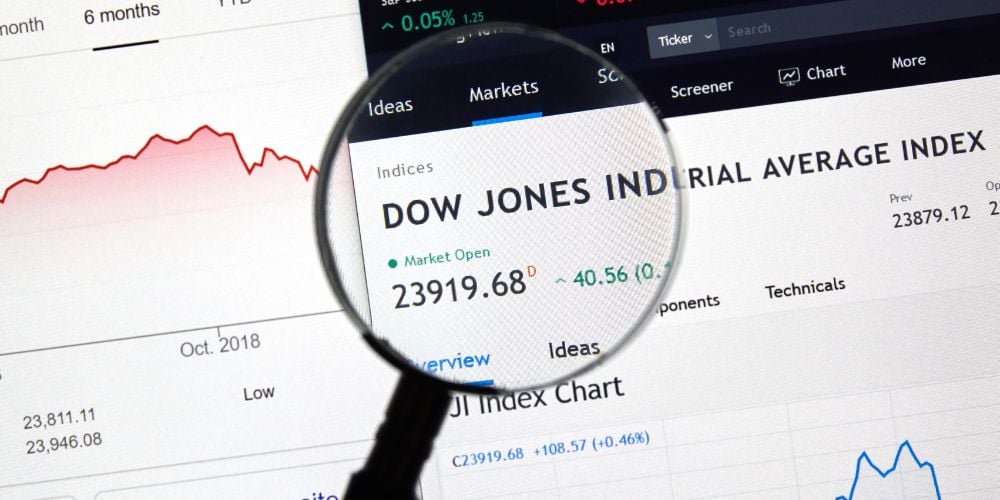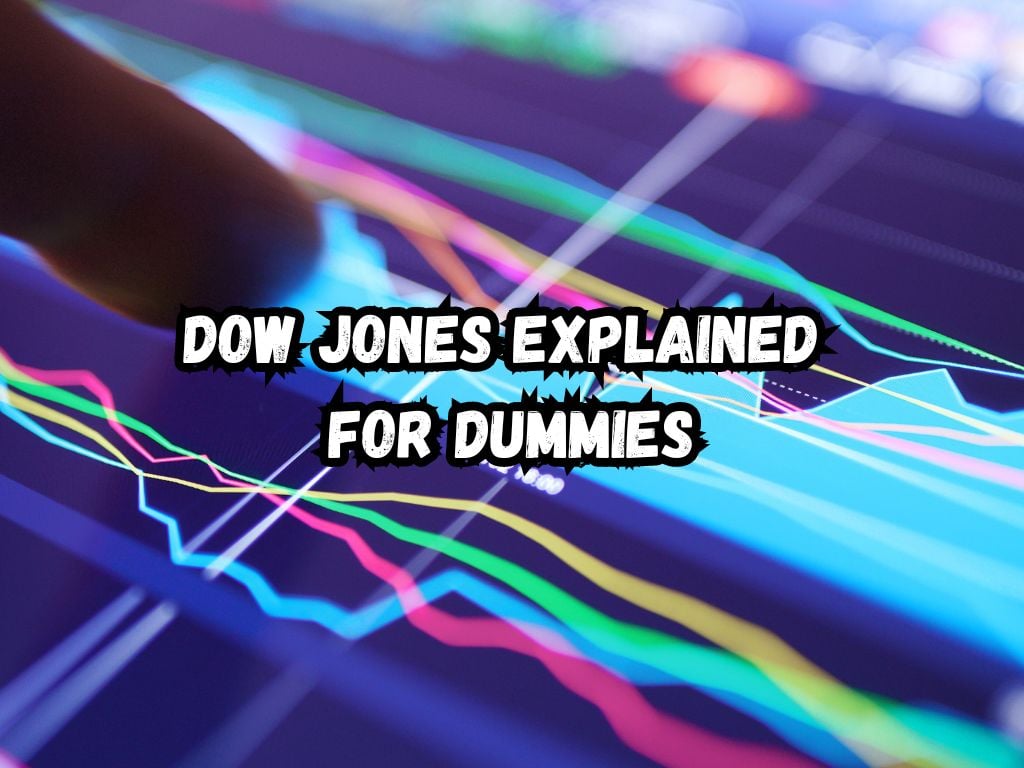Navigating the financial markets can be daunting for beginners. Among the many indices used to gauge market performance, the Dow Jones Industrial Average stands out as one of the most recognized.
Commonly referred to as “the Dow,” this index serves as a snapshot of the economic health of significant US companies, thus the economy.
Grasping its basics is a necessary step for anyone starting in the world of investing. Here’s Dow Jones explained for dummies
What is the Dow Jones Industrial Average?
Born in the late 19th century, the Dow was created by Charles Dow and Edward Jones.
It started with 12 companies mostly from the industrial sector, which is why the term “Industrial” features in its name. Today, it is composed of 30 large, publicly-owned companies based in the United States.
While the industrial sector is still represented, the Dow’s scope has broadened to include businesses from the financial services, technology, and healthcare sectors, among others.

How the Dow Jones Works
The Dow Jones is unique because it’s a price-weighted index, meaning the companies with the highest stock prices have the most significant impact on the index’s movement.
If a high-priced stock experiences a large price change, it will have a more considerable effect on the Dow’s performance than a lower-priced stock with the same percentage change.
Over time, the Dow is subject to reevaluations. Companies may be removed, and others added, ensuring the index stays relevant and reflective of the current economy.
Monitoring the point value, which is the sum of the prices of all stocks in the index divided by a divisor, is crucial. This divisor changes with stock splits and other adjustments.
The Dow Jones vs. Other Indices
Other popular indices, such as the S&P 500 and NASDAQ, include more companies, making them more comprehensive. Unlike the Dow, the S&P 500 is a market-cap-weighted index, which considers a company’s total market value.
These distinctions are why some investors favor one index over another, depending on their informational needs.
Dow Jones Explained for Dummies
Interpreting the Dow requires a bit more than watching numbers go up and down. Its performance is often weighed against economic indicators like employment rates and gross domestic product (GDP).
Traders look for patterns and trends, such as the bullish or bearish markets, to inform their investment decisions.
Impact of Dow Jones on Markets and Investment
The Dow can influence market sentiment. For example, a significant dip might spark concerns about economic health, affecting how investors choose to allocate their money.
Conversely, a rising Dow might signal investor confidence. “Dow Theory,” one of the oldest market theories, suggests that Dow movements can predict the economic future.
Monitoring the Dow Jones
Various tools, online platforms, and financial news sources offer daily reports on the DJIA’s performance. Investors often look to these updates to guide their trading decisions.
One professional tip is to align the frequency of monitoring the Dow with your investment style; a long-term investor might not need the same level of vigilance as a day trader.

Investing in the Dow Jones
Investing directly in all the Dow’s constituent companies is often prohibitive due to the high share prices of some of its members.
Index funds and Exchange-Traded Funds (ETFs) tied to the Dow provide an alternate route. They allow for diversified investments without the need to buy every stock individually.
Potential risks include market volatility and the impact of significant price movements of a few large companies on the index.
Historical Milestones of the Dow Jones
The Dow Jones Industrial Average was launched in 1896, starting with 12 companies mostly from the industrial sector.
It has since witnessed significant historical events that shape its trajectory:
- 1929: The Great Depression began with a massive market crash, leading to significant economic downturn.
- 1987: Black Monday saw the Dow drop 22.6% in one day, underscoring market volatility.
- 2008: The financial crisis triggered a major recession, with a substantial impact on global markets.
- 2020: The COVID-19 pandemic caused sharp declines followed by a swift recovery, highlighting the market’s resilience.
These events demonstrate the Dow’s enduring growth potential despite various economic challenges.
Role of Technology in Tracking the Dow
Advancements in technology have transformed how investors track and analyze the Dow Jones Industrial Average.
Real-time trading data, once exclusive to professional traders, is now accessible to individual investors through various mobile apps and websites, such as Robinhood, E*TRADE, and Bloomberg. These platforms offer live updates, detailed analyses, and historical data, enabling both novices and experts to make informed decisions.
Moreover, advanced trading platforms provide sophisticated analytical tools, including AI-driven predictions and trend analyses, making it easier to forecast market movements and optimize investment strategies.
The democratization of financial information through technology empowers individuals to engage with the Dow like never before.
Conclusion
The Dow Jones Industrial Average serves as a critical indicator of the market’s health and economic outlook. While its unique construction and influence offer valuable insights, investors should view it as just one component of a larger investment strategy.
Remember, the Dow is not the whole market but can act as a valuable guide to understanding the broader economic picture.
Understanding this cornerstone of the U.S. stock market is an essential step on every investor’s journey.


 Tags:
Tags:










